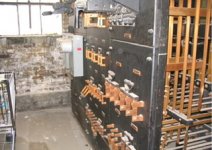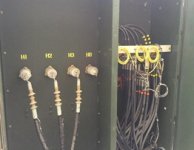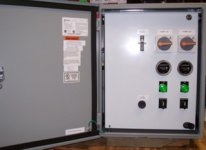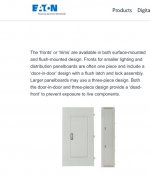- Location
- New Jersey
- Occupation
- Journeyman Electrician (retired)
As the title asks what is a dead front? In the photo below the panel has a two part cover, an inner trim (shown) and a cover (not shown). Some say that the inner trim is the dead front but the definition in the NEC seems to say otherwise. IMO the combination of the inner trim and the outer cover make up the dead front. For a residential style panel the two are connected together so the point is moot. Any opinions?
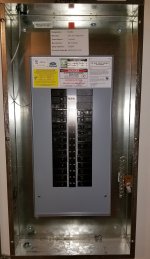
Article 100: Dead Front. Without live parts exposed to a person on the operating side of the equipment.



